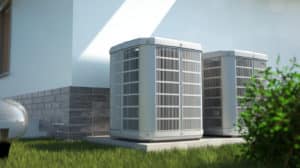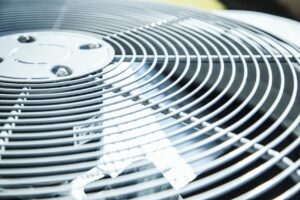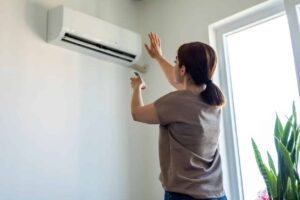
When the temperatures get hot during the summer months, it can be unbearable without an effective cooling system. A cool, comfortable environment will dramatically improve your ability to enjoy your home. In addition, it is essential in many businesses to keep employees safe and productive. Heat-related illness can result in medical emergencies, and lost productivity due to hot temperatures can be devastating to your bottom line.
While air conditioning systems are the most commonly known cooling solution, they often may not be the best option for your specific cooling needs. These systems provide you with the ability to establish an exact ambient temperature, allowing you to achieve optimal levels of comfort at all times. However, this benefit comes at a significant cost.
Air conditioning units consume a tremendous amount of energy, making them a much more expensive solution compared with alternatives such as evaporative coolers. In addition, air conditioners require a completely closed environment, which simply isn’t practical in many situations.
Before determining whether air conditioning is the right cooling solution for your space, it’s important to understand how these systems work.
Air conditioning systems use coolants to remove heat and moisture from the environment. Air is chemically cooled in coils. A fan will distribute the cooled, conditioned air throughout your home or work environment to provide a more comfortable temperature and better indoor air quality. The heat and moisture removed from the air during the cooling process are dissipated outdoors through a ducting system.
Since air conditioning removes moisture from the air during the cooling process, this option is typically better suited for humid climates rather than arid climates. Removing moisture from air that is already very dry can negatively impact your comfort, causing itchy eyes, sore throats, and dry skin.
There are three main components to an air conditioning system:
 The compressor and condenser are generally located outside, while the evaporator is housed inside the building being cooled.
The compressor and condenser are generally located outside, while the evaporator is housed inside the building being cooled.
Liquid chemical refrigerants inside the evaporator cool hot air passing over a set of coils. This causes the pressure of the refrigerant to drop, converting it into a gas. When this liquid transforms into a gas, it absorbs heat. In order to effectively cool the inside air, the evaporator coils convert the refrigerant from a gaseous state back to a liquid state.
The compressor is responsible for turning the gas back into a liquid. It accomplishes this by using a large pump to pressurize the refrigerant gas. The heat generated when this gas is compressed back into a liquid is funneled outside by a set of coils in the condenser. A fan then blows this hot air out of the unit.
This process repeats over and over again until you’ve reached your desired inside air temperature:
The inside air temperature is regulated by a thermostat. Once the thermostat registers that the room has reached its desired temperature, the air conditioner shuts off. As the inside air temperature rises over time, the thermostat will recognize the need for additional cooling, and the air conditioner will turn on again.
There are several different air conditioning system options available. Each one is ideally suited to cool different types of environments, and the right solution for you will depend on the space you are trying to cool.
Window air conditioner units are the smallest and most affordable solutions. They can be an effective option if you’re trying to cool a small space, such as an individual room in your home. The entire air conditioning system comes in a self-contained unit that fits into a standard window frame. However, these units are much less practical when you need to cool larger areas such as an entire home, a workshop, or a large work environment.
 Ductless mini-split air conditioning systems are typically used to cool older homes that lack ductwork or add-ons to smaller homes where it’s not practical to install ductwork. There are two main components to these systems:
Ductless mini-split air conditioning systems are typically used to cool older homes that lack ductwork or add-ons to smaller homes where it’s not practical to install ductwork. There are two main components to these systems:
These two components are linked together with a conduit that is placed in the wall.
The primary advantage of this option is the ability to achieve flexible cooling in each part of your home using a more energy-efficient system than central air conditioning. In addition, you’ll avoid the need to tear up your ceiling and walls to install the ductwork necessary to run central air. Because the compressor is located outdoors, these systems are much quieter than window AC units. In addition, you don’t lose the use of a window to run air conditioners.
If you’re looking for an air conditioning solution that will cool your entire area, central air systems are your best option. Central air conditioning uses ductwork to distribute cooled air throughout the building. The components of this system are located outside the building, except for the air handler, which is shared with your furnace.
This is the most efficient air conditioning option to keep your entire space cool, and you have the ability to maintain your specific desired temperature. Since all components are located outside, central air provides a very quiet cooling solution. If your structure is equipped with ductwork, this is the most popular choice.
If you’re trying to cool a home, air conditioning is often the best option. However, this solution is typically much less practical when cooling large industrial spaces, business environments such as auto garages, airplane hangars, and other areas which often require doors or windows to remain open, home workshops, and outdoor spaces. In these situations, you’ll often experience much better value by using an evaporative cooler.
Evaporative coolers provide three important benefits compared with air conditioning systems:
 All of these benefits are related to the fact that it takes much less electricity to operate evaporative coolers. Evaporative coolers only use as much electricity as is necessary to run the fan drawing the air through and the pump flowing water over the media. In contrast, air conditioning systems must power:
All of these benefits are related to the fact that it takes much less electricity to operate evaporative coolers. Evaporative coolers only use as much electricity as is necessary to run the fan drawing the air through and the pump flowing water over the media. In contrast, air conditioning systems must power:
This complex process requires a tremendous amount of electricity. In fact, air conditioning systems can use up to seven times as many watts of electricity as evaporative coolers.
The lower electricity consumption associated with running an evaporative cooler will significantly lower your monthly energy bills. You’ll also save money on installation costs with evaporative coolers. Installing an air conditioning system is a complex process that can often cost a small fortune. In contrast, the purchase price and installation of an evaporative cooler is a fraction of this amount. Between the lower initial setup costs and lower monthly utility bills, you’ll find that evaporative coolers save you a significant amount of money over time.
In addition to cost savings, you’ll reduce your carbon footprint with an evaporative cooler. This option is a more environmentally friendly solution for two reasons:
One other important factor to consider is whether the space you’re trying to cool is an enclosed environment. Air conditioning requires a completely closed space to function properly. If you have open doors or windows, it will let all the cool air escape, adding to the excessive costs associated with running air conditioning. In addition, air conditioning simply isn’t a viable option to cool outdoor spaces.
On the other hand, evaporative coolers are ideally suited to cool spaces with access to outside air. In fact, evaporative coolers need outdoor air to function correctly. If you’re trying to cool an outdoor space or an indoor space where doors and windows will remain open, evaporative coolers are generally the more effective solution.
Portacool has been making evaporative coolers since 1990. Over the last 30 years, we’ve established ourselves as the industry leader, delivering robust cooling solutions for a wide range of applications. All of our evaporative coolers are made in the USA at our Center, Texas manufacturing facility. In addition, our evaporative media is made in the USA by our subsidiary company, Kuul, ensuring it is designed to the precise specifications required by a Portacool device.
With four lines of Portacool evaporative coolers, we can address any need you may have. You can use a Portacool for the following applications:
You can find a retailer near you to purchase an evaporative cooler or contact us to learn more.